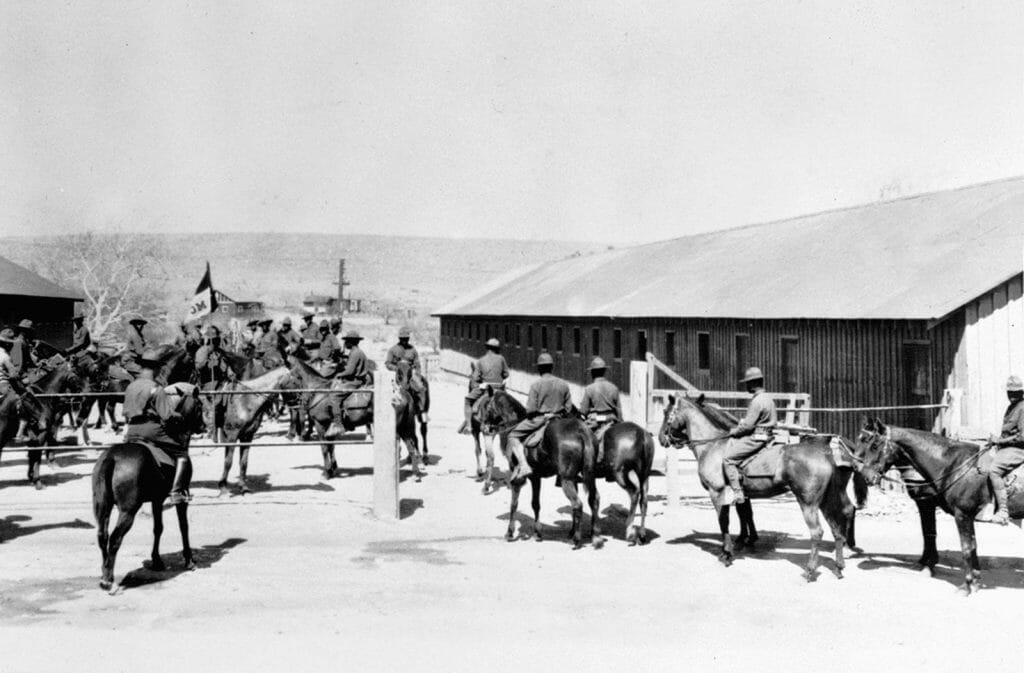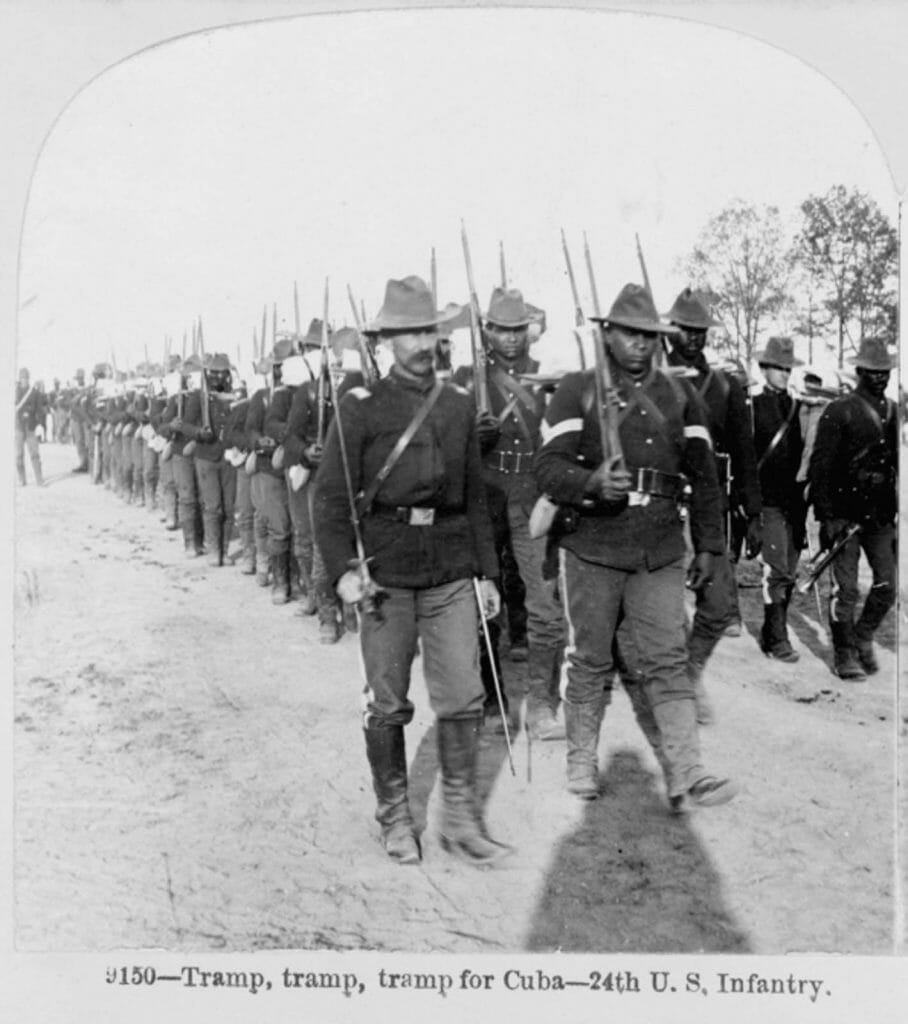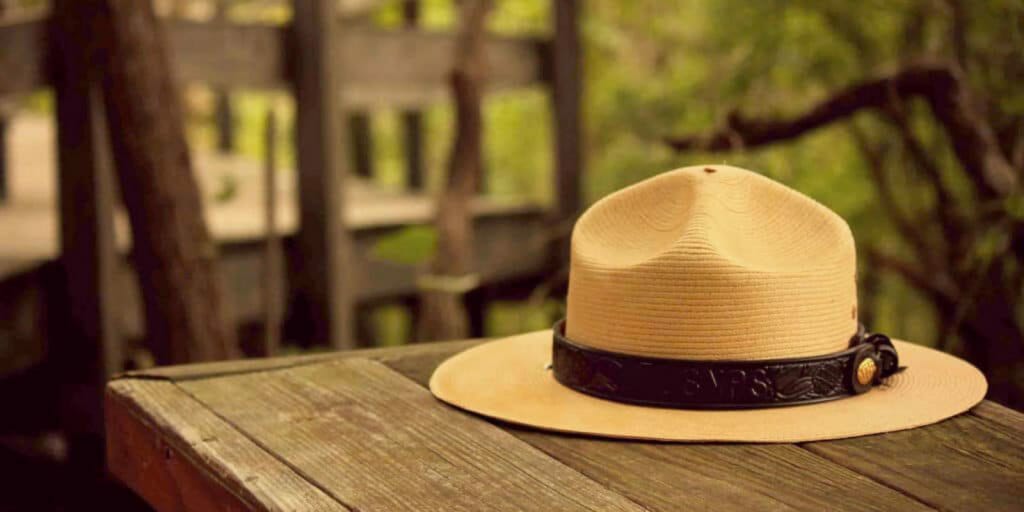A Brief History of America’s Original National Park Guardians, The Buffalo Soldiers
Let’s take a journey back to a time long before the National Parks existed. In the year 1865, after the end of the American Civil War, a fractured United States sought to begin rebuilding and expanding into the Western frontier. Congress passed the Army Reorganization Act the following year, in 1866, effectively doubling the size of the army and adding six all-African-American regiments to the military.
This act signified the first inclusion of Black soldiers into the United States Army.
In 1869, these six segregated regiments became consolidated into the 9th and 10th Cavalry, and the 24th and 25th Infantry. These troops later became known as the Buffalo Soldiers.


During the military campaigns of the decades-long Indian Wars of this era, the Buffalo Soldiers gained recognition as valiant soldiers of exceptional performance. It is believed that the Native Americans who encountered their regiments called them the Buffalo Soldiers because of the resemblance they saw between their hair and the fur between the horns of the wild buffalos of the plains. Another story goes that they were given the name by Native Americans because of their courage and fighting spirit in battle, similar characteristics of the wild buffalo. Soldiers considered this high praise because of the respect that Native Americans had for the buffalo.
Even with this recognition, the Black soldiers constantly faced difficulties in military ranks due to resistance they met from White soldiers who were more in favor of discrimination and mistreatment than integration.Racial prejudices of the time made performing tasks difficult, and undermined the authority of any Black man in a position of power, despite the fact that they wore the U.S. Army uniform.

Over the years, pressing forward into Westward expansion brought forth new duties for the Buffalo Soldiers. There was a growing idea of protecting land for the enjoyment of future generations and by 1890, three national parks had been established including Yellowstone, Sequoia, and Yosemite. But the U.S. was still decades away from establishing the National Parks Service, which President Woodrow Wilson later signed into existence in 1916. So in the meantime, the U.S. Army, who possessed the organization, logistical prowess, and mobility necessary to manage the parks, was enlisted.
The Army served as the official administrator of Yosemite and Sequoia National Parks between 1891 and 1913, and enlisted the Buffalo Soldiers among the first regiments to oversee them.In the years 1899, 1903, and 1904, the Buffalo Soldiers performed many duties that were critical to protecting the land. They warded off illegal grazing by ranchers, poaching and hunting. They defended the land against illegal logging, wildfires, and other threats. They also oversaw the construction of park infrastructure, including but not limited to, the establishment of the first trail to the summit of Mount Whitney in 1903, and the construction of the first usable road into the Giant Forest in Sequoia National Park.
Recognition of the Buffalo Soldiers’ outstanding performance in battle and devotion to service also helped to break down the barriers of race in the American military.In 1877, former-slave Henry O. Flipper, became the first African-American graduate from West Point Military Academy, and went on to serve as an officer. Charles Young, the third African-American graduate of West Point, served as Acting Military Superintendent of Sequoia and General Grant National Parks. Many recognize him as the first African-American superintendent of a national park.
As for those iconic hats that park rangers wear today? They are inspired by the hats some Buffalo Soldiers donned while serving in the Spanish-American War.

Veterans of the war brought the style to Yosemite, and the “Montana Peak” became part of the official uniform in 1920. During war, the hat functioned to protect soldiers from strong sun and the torrential rain storms in Cuba and the Philippines. Today, they serve not only to protect rangers from weather, but also to pay homage to the exceptional dedication that the Buffalo Soldiers showed for their country in the face of adversity.
Story by LA program manager/guide, Nick Estrada.
For more information and stories of the Buffalo Soldiers:
- https://www.nps.gov/subjects/buffalosoldiers/index.htm
- https://www.history.com/topics/westward-expansion/buffalo-soldiers
- https://nmaahc.si.edu/blog-post/proud-legacy-buffalo-soldiers
- https://open.spotify.com/episode/3XTFnJNaqNcr0IFUWqfSAt?si=pDLnJTPnQguXcQgTE3RLsQ
- https://www.nationalparkstraveler.org/2011/02/short-history-flat-hats-lemon-squeezer-pinch7583
- Listen to “A Buffalo Soldier Speaks,” an audio podcast featuring National Park Ranger Shelton Johnson as Sergeant Elizy Boman, Troop “K,” Ninth U.S. Cavalry, who was dispatched to Yosemite National Park in 1903 and served there through 1904.
Read the Lasting Adventures’ letter of solidarity here.










2 Comments